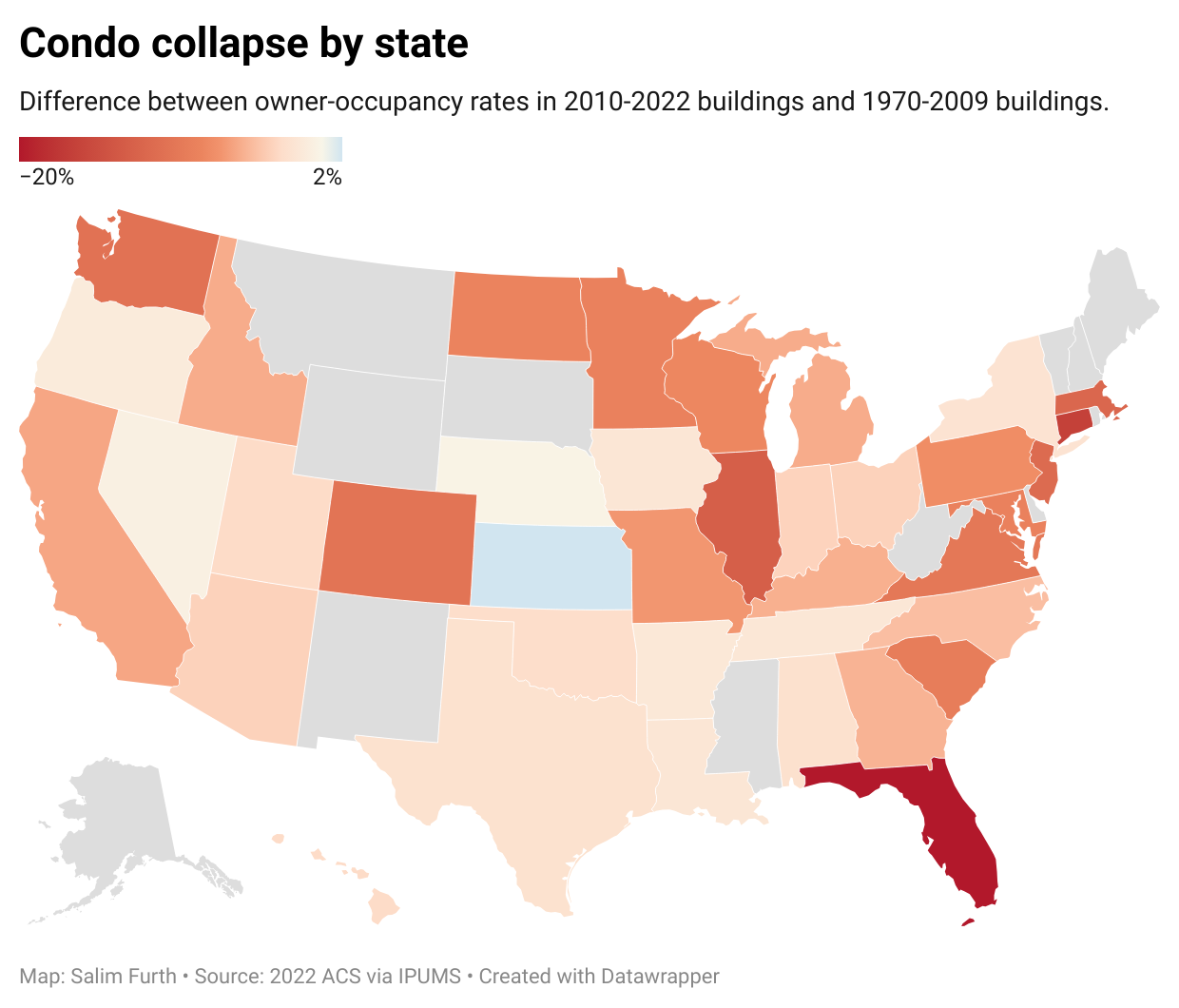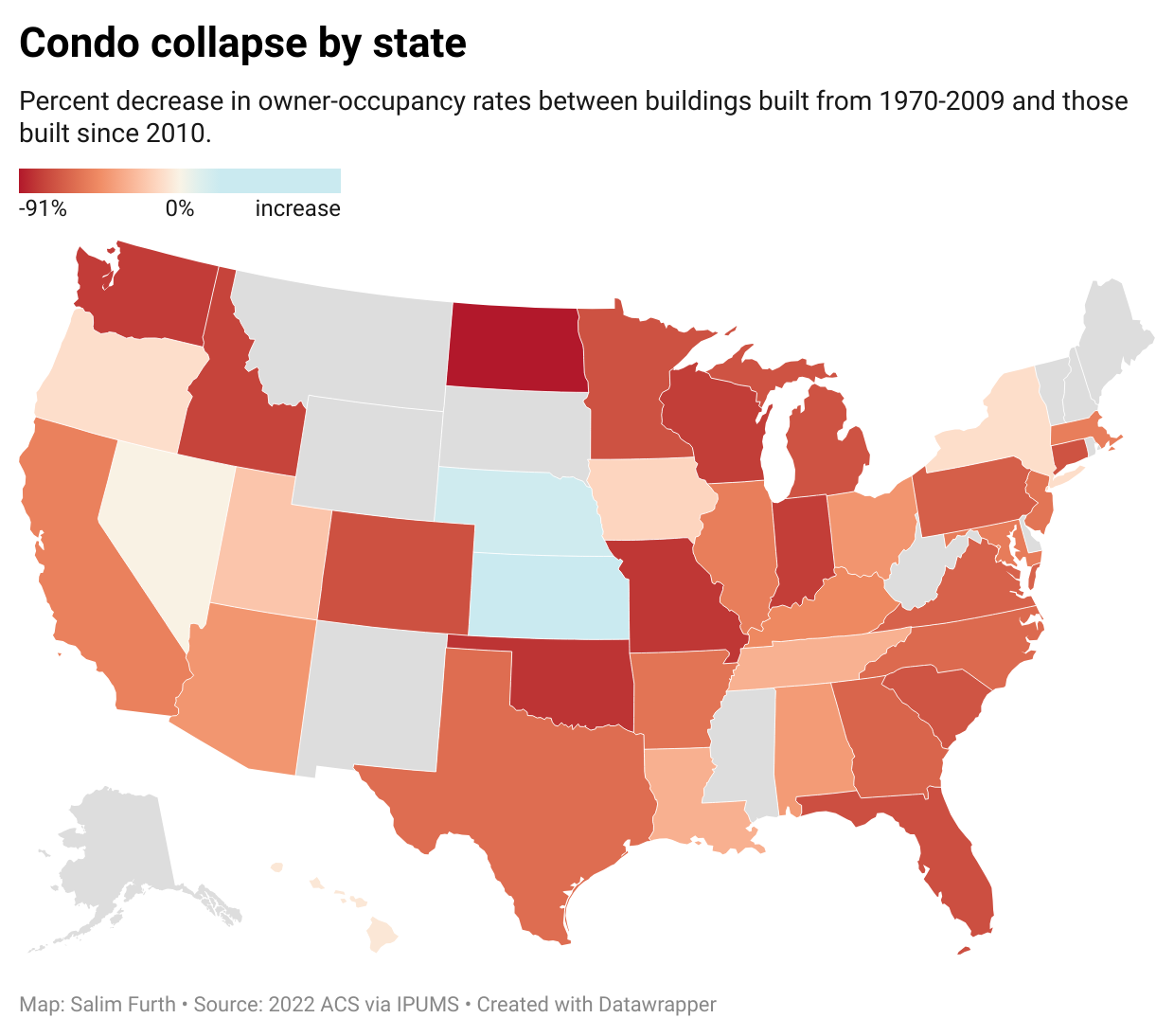Physical Address
304 North Cardinal St.
Dorchester Center, MA 02124
Physical Address
304 North Cardinal St.
Dorchester Center, MA 02124

Condos are disappearing. They persist now mainly in pre-2010 buildings. Among multifamily homes built in the 2020s, just 1 in 25 is owner-occupied. What happened?

I pulled American Community Survey data via IPUMS to get a better grasp of the numbers and the geography. Nationally, the rate of owner occupancy drops from 15% to 5% for multifamily units built in the 2000s to 2010s:

The easiest explanation for any change is composition. But that doesn’t appear to be the case.
One suspect is condo defect law, which has (at least in some states) swung so far that most builders and insurers won’t touch condos. Another is the fact that older condos have appreciated less than houses over time suggests that it’s not just construction problems.
Going to the data, I’ll use owner occupancy rate as a proxy for condo status. It’s imperfect: some condos are rented out; some owner-occupants in smaller buildings own the entire structure. But it’s broadly available and allows comparisons across buildings of different vintages.
The most striking piece of data is the extreme variation in owner occupancy of newish multifamily (5+) buildings:

Hawaii is in a league of its own: 40% of multifamily units are owner-occupied. The next highest are New York, at 15%, and Illinois and DC at 12%. I left out 11 states that had fewer than 150 relevant respondents in the ACS.
If state-level changes are to blame, we should see big differences in the declines across states; if it’s mostly tax or mortgage policy driving the decline, we’d expect declines everywhere.

We can look at the same data in percentage terms:

A few states worth are worth flagging:
There’s room for more explanatory and policy research on this topic. Why did the collapse hit Florida so hard? Have condos underperformed houses in appreciation terms everywhere? Why has Texas never built a significant number of condos? What can we learn from Utah about crafting a balanced condo-defect law? This won’t be my next project – but if it’s yours, let me know.